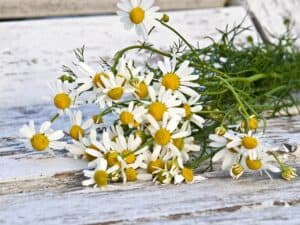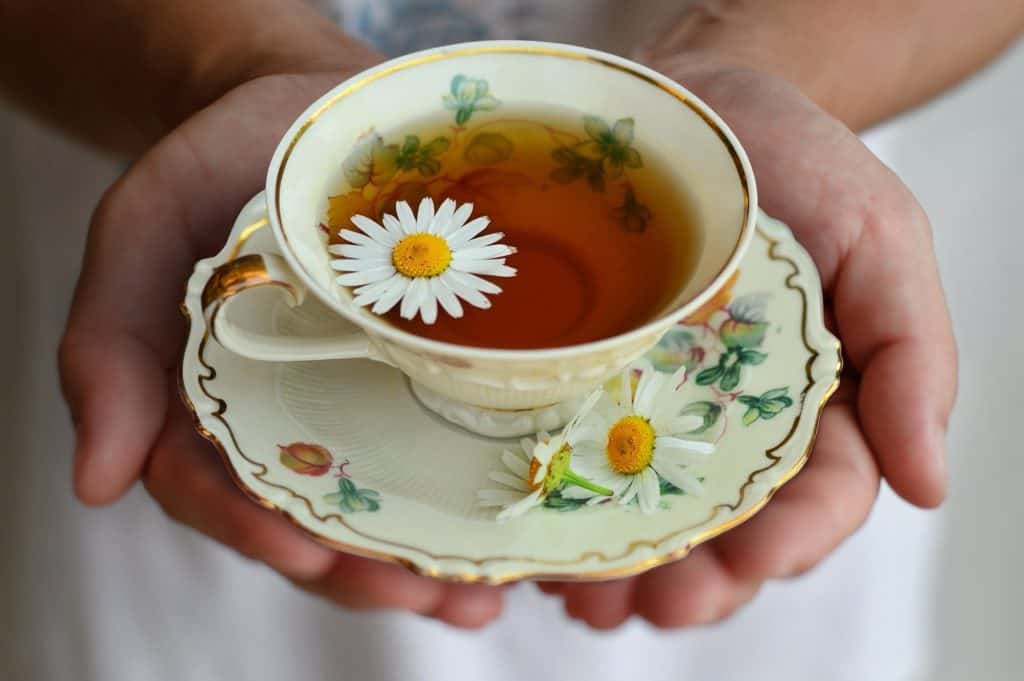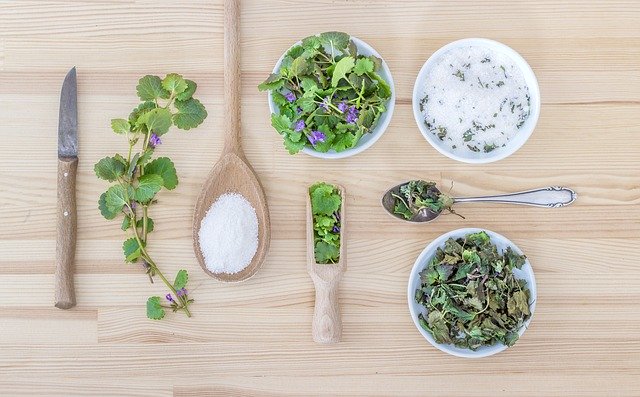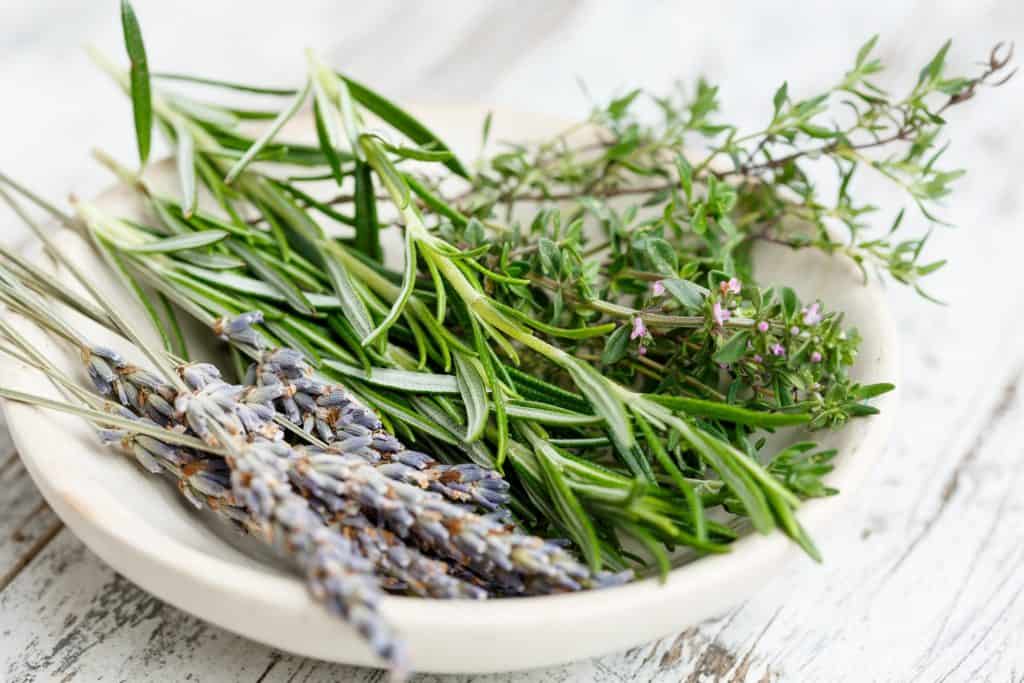Every aspiring home herbalist and green witch needs to grow their knowledge of common herbs right along with their herb gardens. Chamomile is one of my favorite herbs and one that I think belongs in every garden.
This post is part of a series that will introduce you to 8 common medicinal herbs and how you might want to use them in your home apothecary. Of course, there’s much more to know about each plant, but hopefully this will be enough to inspire your curiosity.
Chamomile for upset stomach and more
Chamomile is widely available at health food stores and even in the tea section of your local grocery store.
Did you know that chamomile has been used to soothe an upset stomach? Remember Peter Rabbit? You might remember that his mother gave Peter some chamomile tea for his stomach ache. Smart mom.
Chamomile is also good for calming nerves. It’s a great to drink right before bed to help you relax and forget about the hard day you had, helping you to settle down for a good night’s sleep. I love sipping a hot cup of chamomile tea about an hour before bedtime. It’s the perfect end to the day. Plus, it brings in a little bit of plant magick to my day.
Chamomile is also known for helping with digestion so adding chamomile tea to your mealtime is a way to tap into those benefits. I love an after dinner cup of tea, especially since I gave up coffee in 2018. (Did you gasp? I know. A lot of folks wonder how I do it.)
Chamomile is another fantastic herb to add to your herb garden. It’s easy to grow with tiny daisy-like flowers on a fern looking plant. Although it is mostly thought of as an annual, it has readily reseeded itself for me year after year. Because it’s cheery to look at, this is a great addition to your flower garden as well as your herb garden.
Tip: If you’re looking for a way to get your kids or grandkids interested in gardening, set them up with a pot and some chamomile seeds for them to grow, harvest and then make up into a delightful tea. They’ll love it.
Here are some other things chamomile can help with:
- Appetite
- Asthma
- Bladder
- Colds
- Circulation
- Digestion
- Fever
- Flu
- Headaches
- Hemorrhoids
- Hysteria
- Stomach
- Menstrual Flow
- Toothache
- Intestinal Tract

Chamomile For The Skin
Chamomile can also be dried and used for the skin. When used topically, it can help reduce inflammation in things like wounds and burns. With its soothing properties, it can be useful for blisters and inflamed areas on your skin. Chamomile is also great for dry and itchy skin. It can be a fantastic ingredient to add to any skincare product you want to make for yourself.
You can preserve this flower by infusing it in your oil of choice. Infused oils will not stay fresh for a long time, so it’s always a good idea to use up the oil mixture within a year or less. Always be sure to check your oils for freshness before making any other preparation from them. Make a fresh infusion batch each season.
Make a Chamomile Tea Jar
It’s fun to have jars of herbs all around the kitchen on display. (I have a child-sized china buffet that’s been in my family for generations that is my own home apothecary.) Why not make a simple tea jar, filled with fun herbs? Add in a cute little scoop.
(This is another way to get kids interested in growing or working with herbs.)
The next time you want a soothing cup of tea, then scoop out some from your jar and add to a mesh tea infuser.
Here’s what you need:
- Large clear jar with lid
- Scoop
- Dried Chamomile
Add the dried chamomile to the jar, add the scoop and put on the lid tightly. You’ll want to store in a dark area with no direct sunlight, since direct sunlight will diminish the active ingredients of the flower. This is true for all of your herbs and herbal preparations.
Make the tea like this:
Place in a mug and add hot water. You can use a tea ball or strain out the plant material before drinking the tea. I send all of my spent plant material from tea-making to the compost pile to use it a second time.
Morning Tea Booster Recipe
You can combine other dried herbs to the mix. Make yourself a unique blend of herbs that suits your taste buds. It might be fun to have a jar of “Morning Tea” with ingredients of nettle, peppermint, and green tea for a nutritious boost in the morning.
Summary
Chamomile is one of those herbs that always has a place in my own garden. There’s nothing like a cup of tea made from ingredients you grew yourself and that’s even more true when it’s as delightful as chamomile tea.
I hope you’ll be inspired to try growing chamomile in your herb garden.
Be sure to check out the other posts in this series. They’re listed below for you.
Blessed be.
Other Posts in this Series
What is Plant Medicine? The Basics.
Learning Plant Medicine for Beginners
Start your Own Home Apothecary: Tools & Methods
8 Plant Medicines Found in your Kitchen
Plant Medicine to make in the Fall
Disclaimer: I’m not a medical doctor or an herbalist. This article isn’t intended to be medical advice. Not all plants are safe to use. Some are toxic and can be deadly. Other herbs may cause an allergic reaction in some people. Always consult your doctor, healthcare provider or a qualified herbalist before using any type of plant medicine.



